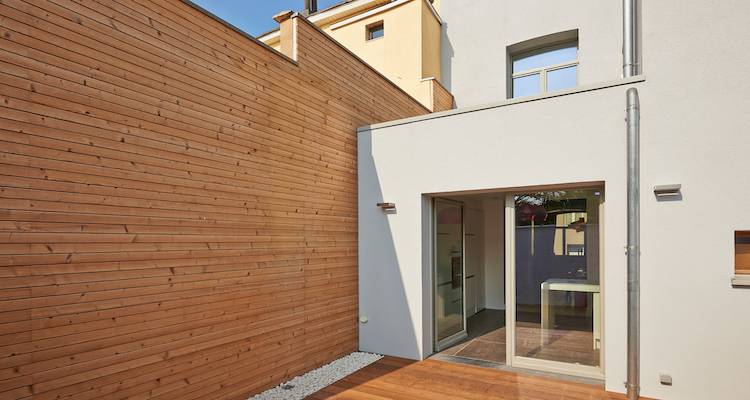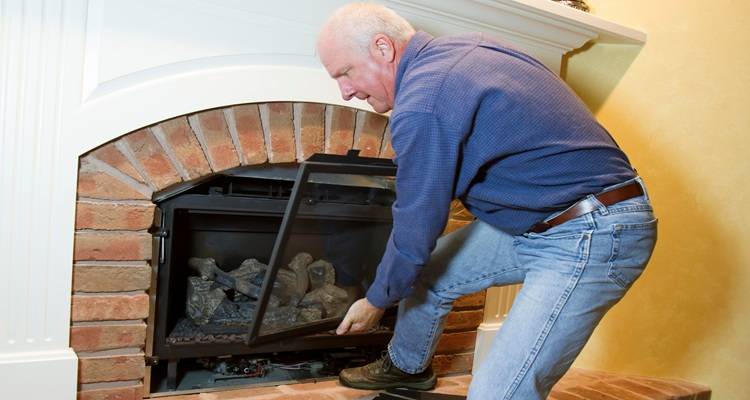Cost to Move a Radiator
- The average cost to move a radiator is around £150
- The job will usually take between 2 - 5 hours to complete
- A breakdown of pricing information including what your options are, the cost factors to consider and what's involved in such a task
- How long the job will take and a general overview of what types of jobs can be performed
- How to find and hire a radiator fitter
Trying to find out how much it costs to move a radiator?
In this price guide, we look at the average costs for moving a radiator, including radiator prices depending on the type, plumber costs and any additional costs that might incur.
An average price to take a radiator off the wall and re-position it is usually around £150.
Ready to get a quote?
We can also help you out with quotes for a radiator fitter if you already know what you want.
Read below to find out more!

£150
Table of Contents
- How Much Does it Cost to Move a Radiator?
- Supply Only Costs
- Additional Costs
- Labour Costs and Timescales
- Cost Factors of Moving a Radiator
- What's Involved in Moving a Radiator?
- Can I Move a Radiator Myself?
- Types of Radiator
- Where Can I Move a Radiator to?
- Building Regulations for Moving Radiators
- Cost of Moving a Radiator
- Hiring Someone for Moving Radiator Checklist
- FAQs
- Sources
How Much Does it Cost to Move a Radiator?
If you are renovating or extending your home, you may find that you need to move a radiator. Sometimes you may also want to move a radiator if you feel the need to add more radiators within your home. Regardless of the reason why you want to move a radiator, you are probably wondering how much the job is going to end up costing overall.
It may surprise you to learn that moving a radiator won’t hurt your budget hugely. In the majority of cases, moving a radiator is a straightforward job that most plumbers can complete in a short space of time.
The total cost of the job will depend on what you are looking to achieve. You can expect to pay roughly £40-£60 for the materials and a further £80-£120 for the labour of moving the radiator.
The ease of relocation is going to play a big part in the length of time that it takes to move the radiator, as well as the overall cost of the job. Does the pipework need to go through plaster, coving, skirting, or brickwork? Every obstacle that sits in the way makes the job that bit more complex, and these are the things that will add cost and time onto the job.
Once your radiator has been successfully moved, bleeding is always necessary. Bleeding a radiator will only take around 30 minutes but can cost an additional £40-£50 to complete.
Is under the window the best place in a lounge to put a radiator?
Moving a Radiator Prices
| Job Type | Duration | Material Costs | Labour Costs |
|---|---|---|---|
| Moving a radiator | 2-3 hours | £40-£60 | £80-£120 |
| Adding a new radiator | 3-5 hours | £100-£200 | £120-£180 |
| Bleeding a radiator | 30 minutes | £4-£6 | £40-£50 |
Supply Only Costs
When it comes to moving a radiator, you don’t need a whole lot of supplies since you already have the radiator. However, you may decide to choose a new or different type of radiator to install in the new position. If this is the case, you will need to purchase a new radiator.
Radiator prices can vary depending on sizes or types of radiator. Below is a list of the different types of radiators that you can get and the average cost for each one:
Central Heating Radiator Costs
Small Central Heating Radiator – £20-£40
Medium Central Heating Radiator – £40-£80
Large Central Heating Radiator - £85-£120
Column Radiator Costs
Small Column Radiator – £115-£190
Medium Column Radiator – £148-£230
Large Column Radiator - £320-£380
Designer Radiator Costs
Small Designer Radiator – £180-£500
Medium Designer Radiator – £200-£650
Large Designer Radiator - £410-£690
Vertical Radiator Costs
Small Vertical Radiator – £250-£495
Medium Vertical Radiator – £280-£525
Large Vertical Radiator - £230-£575
Towel Radiator Costs
Small Towel Radiator – £50-£350
Medium Towel Radiator – £100-£480
Large Towel Radiator - £60-£500
Cast Iron Radiator Costs
Small Cast Iron Radiator – £280-350
Medium Cast Iron Radiator – £525-£595
Large Cast Iron Radiator - £490-£750
Flat Panel Radiator Costs
Small Flat Panel Radiator – £180-£250
Medium Flat Panel Radiator – £200-£225
Large Flat Panel Radiator - £220-£250
Stainless Steel Radiator Costs
Small Steel Radiator – £250-£450
Medium Steel Radiator – £450-£540
Large Steel Radiator - £250-£580
Mirror Radiator Costs
Mirror Radiator - £315-£410
Space Saving Radiator Costs
Small Space Saving Radiator – £200-£250
Medium Space Saving Radiator – £550-£675
Large Space Saving Radiator - £195-£350
Additional Costs
When moving a radiator to a new location in the room, there may be some other costs that you may need to think about. Below is a list of additional costs that may arise when relocating a radiator:
- New Thermostat - £150-£280
- TRV Radiator Valve - £5-£39
- Double-Glazing Installation - £2500-£6500
- Home Insulation (professional loft insulation) – £300-£350
- Power Flush - £350 - £650
- New Boiler (supply and installation) - £900-£1400
- Pipework (supply and installation) - £800 - £1000
- Water Tank (supply and installation) - £150 - £200
Labour Costs and Timescales
The labour costs of moving a radiator usually fall somewhere between £80-£120. The cost can vary depending on the size of the radiator, the difficulty of the job or the location of your property.
If your radiator is particularly large or if the position you’re moving it to is quite difficult then you may find that the cost of labour increases as the job will take a lot longer than a smaller or simpler job.
Those based in London can expect to pay around £30-£70 for labour than those based in the North of the UK.
On average, moving a radiator will usually take around 2-5 hours to complete. However, if the job is more complex or requires any extra work, then you should expect the time to take a little longer. Regardless, the majority of radiator moving jobs can be completed within a day.
Cost Factors of Moving a Radiator
There are a number of factors that can affect the cost of having your radiator moved.
This can include things such as the number of radiators that need to be moved, the size of the radiator, the type of radiator, whether any extra plumbing work needs to be done, the location of your property, and whether you are moving an existing radiator or buying a new radiator for the new location.
Below is a list of each of the cost factors that can affect the overall cost of the job.
Number of Radiators
The number of radiators that need to be moved can affect the cost of your radiator moving job. The more radiators that need to be moved, the longer the job is going to take.
Plumbers in the UK will charge around £40-£60 per hour and so any additional hours that are added onto the job can cause the overall cost of the job to really add up.
Size of Radiator
The size of the radiator can also affect the cost of the job. Larger radiators will usually take a little longer to move since the job can sometimes be a bit more difficult. This can result in extra labour costs due to the additional time.
Type of Radiator
The type of radiator that needs to be installed can affect the cost of the job as some radiator types are more complex to move than others. Plumbers will often charge more for more difficult jobs, and these types of jobs will also take more time which can result in extra labour costs.
Cast iron radiators can take a lot longer to install than classic radiators as they are much heavier and therefore more difficult to move.
Extra Plumbing Work
If any extra plumbing is needed to complete the job, this can also add additional time on to the job and therefore will result in extra costs.
Extra plumbing work may also require the use of extra materials and so the overall cost of the job will add up as you’re spending more on the things needed to complete the work.
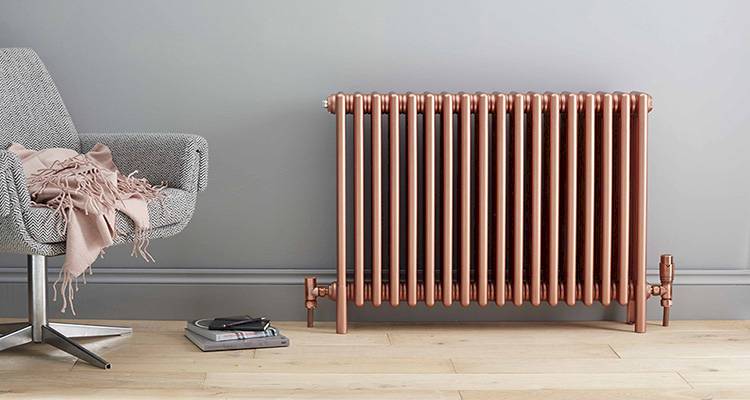
Location of Property
Those based in London can expect to pay around £30-£70 for labour than those based in the North of the UK. With this in mind, people who are based in and around London can expect to pay more for the overall job than people based elsewhere in the UK.
Existing or New Radiator
If you are moving an existing radiator, the overall cost of the job will be much cheaper than if you were to buy a new radiator. Depending on the type and size, radiators can cost on average anywhere between £20-£750.
So, as you can see, the cost of changing a radiator can work out much higher than if you were to use your existing radiator.
What's Involved in Moving a Radiator?
You may be wondering how to move a radiator from one position in the room to another. The following tips explain the easiest way to complete a simple radiator moving job.
- Follow the basic plumbing steps – It is best to only attempt to move a radiator if you have some plumbing knowledge already. Without knowing the basic rules of plumbing, you may damage the pipework, heating system, or you may even cause your system to leak.
If you are attempting this job yourself, you need to ensure that you’re competent in doing so and that you do your research before attempting the job.
- Measure your radiator – You need to start by measuring your existing radiator to ensure that it’s going to fit in the new location.
You also need to measure the space between the bottom of the radiator and the floor so that you can be sure to leave enough room below for all of the necessary pipework.
- Drain the system – Before you start removing the radiator, you need to drain the heating system of all of the water to avoid any messy water from leaking out into the room.
You need to turn off your boiler and isolate any electricity supply, then drain the system completely.
- Cap the pipework – Once you have fully drained the system, you need to cap the pipework that leads to the radiator. You can use soldering or push-fit caps to cap off your existing pipework.
- Move and install your radiator – Since you’ve already made the relevant measurements, you should know exactly where your new radiator placement is going to be.
All that’s left to do now is to install the new radiator using the existing wall fitting from the original radiator. Be sure to check that the pipes are fitted correctly before going about refilling the system.
- Switch the boiler back on – Once everything is in place and fitted completely, you can then switch your boiler back on.
Can I Move a Radiator Myself?
Moving your radiator to a new position is a fairly straightforward job providing you have some basic knowledge of plumbing beforehand.
Unless you feel that you are fully competent to do so and that you have the required plumbing knowledge needed to move a radiator, it’s always best to leave it to the professionals.
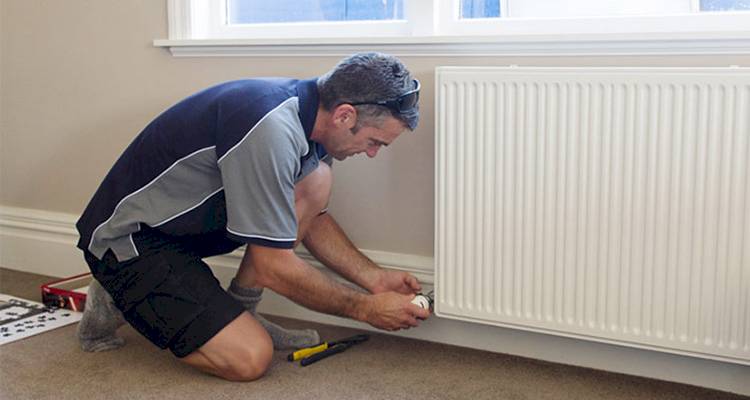
If you attempt to move your radiator yourself without the basic knowledge needed to do so, you could cause damage to your heating system that may result in some hefty costs down the line.
You may also cause leaks within your system, which could cost a lot to fix or could even cause damage to other parts of your property.
Types of Radiator
Below is a list of the different types of radiator that are available to buy:
Central Heating Radiators
Central heating radiators have the highest heat output and also benefit from having the greatest heating efficiency of any type of plumbed radiator style.
This makes them a very popular choice in many homes in the UK. These radiators use corrugated panels to radiate heat out into the room.
You can get single-panel styles of central heating radiators for small rooms, or you can get double-panel ones for larger rooms as these produce more heat.
Pros
- ✔ Extremely efficient
- ✔ Heat up quickly
- ✔ Provide a lot of heat
- ✔ Come in single panel or double-panel
Cons
- ✖ Double-panel central heating radiators can be bulky
Column Radiators
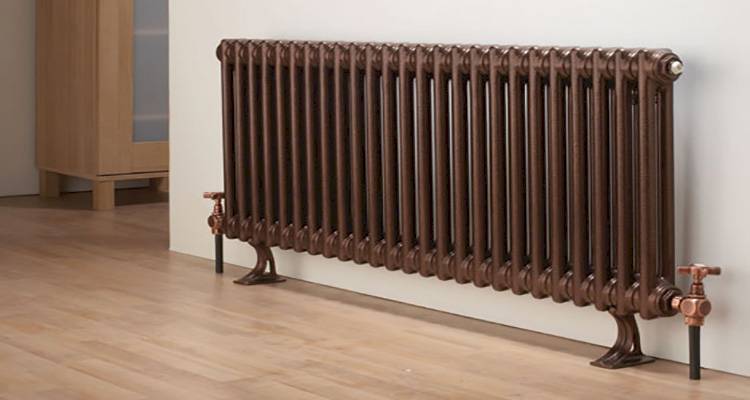
If you are looking to add or retain a little bit of period charm to your home, then a column radiator might be the perfect option for you. These radiators give a nice traditional feel to your home.
They are very similar in style to cast-iron radiators which originated during the Victorian era. These modern column radiators keep the traditional look but offer much greater heat efficiency than the older models.
Pros
- ✔ Traditional style
- ✔ Good heat efficiency
Cons
- ✖ May look old fashioned
- ✖ Could be bulky
Designer Radiators
A designer radiator can bring a wide range of benefits to your home. Some of these benefits include space-saving technologies, amazing designs, and even dual-purpose radiators that double up as mirrors, memo boards, and more!
These types of radiators are the ideal way to add a contemporary and modern feel to any room. They can create incredibly stylish and attractive features that you won’t need to hide or disguise.
Pros
- ✔ Don’t take up a lot of space
- ✔ Modern aesthetic
- ✔ Beautiful designs
- ✔ Stylish
Cons
- ✖ May not be as energy-efficient as some models
- ✖ Expensive
Vertical Radiators
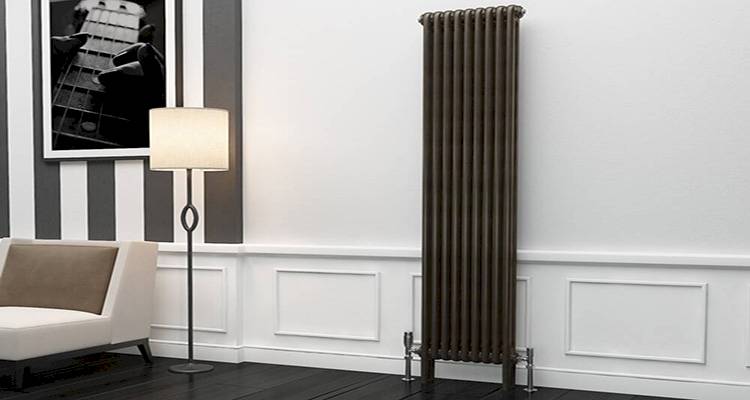
Vertical radiators come in a wide range of styles and colours. They are also very convenient as they can fit perfectly into small wall spaces, meaning you can heat more of your home when you previously wouldn’t have been able to.
If you have a small room in your home, a vertical radiator takes up much less space than a traditional one, so it leaves you with a lot more room for furnishings.
If you choose a bold design, a vertical radiator can even become a part of the décor too.
Pros
- ✔ Space-saving
- ✔ Stylish
Cons
- ✖ Always visible
Towel Radiators
With a towel radiator, you can dry your towels whilst also adding some extra warmth into your bathroom. This can look very stylish and is perfect for when you’re getting out of the bath or shower and need that little bit of extra warmth in there.
Pros
- ✔ Adds extra warmth to the bathroom
- ✔ Dries towels
Cons
- ✖ Can take up a lot of room
- ✖ Not always enough to heat the whole room alone
Cast Iron Radiators
A cast iron radiator takes longer to heat up and cool down than other models of radiator. This means that they keep warm for longer after turning your heating off. With this in mind, these are great radiators for large rooms with high ceilings.
This model of radiator would be best suited in an older period home. However, they can be a beautiful feature in contemporary décor.
Pros
- ✔ Keeps warmth in longer
- ✔ Great for larger rooms or rooms with high ceilings
Cons
- ✖ Takes longer to heat up
- ✖ May corrode over time
Flat Panel Radiators
If you are looking for a very easy and relatively fast way of changing your radiators, then a flat-panel radiator is the perfect option for you. These radiators are designed to be light and compact. They can fit into almost any room without taking up a hefty amount of space.
Pros
- ✔ Light and compact
- ✔ Easy to move
- ✔ Don’t take up a lot of space
Cons
- ✖ Often small so don’t produce as much heat
Stainless Steel Radiators
Stainless steel radiators are very efficient, but they are also a stunning room feature. They are available in a variety of beautiful finishes that are both easy to maintain, and easy to keep clean.
Stainless steel doesn’t corrode or rust as some other metals do, and so a stainless steel radiator is guaranteed to last a long time.
Pros
- ✔ Very efficient
- ✔ Stylish
- ✔ Easy to keep clean
- ✔ Doesn’t corrode
- ✔ Last a long time
Cons
- ✖ Not to everyone’s taste
Mirror Radiators
Mirror radiators can be a great choice for bedrooms, bathrooms, and hallways. This is because they give the perception of a bigger space. They also double up as a stylish décor item whilst giving off heat to warm the room.
Pros
- ✔ Heat rooms where there isn’t much room for a radiator
- ✔ Stylish
Cons
- ✖ Usually small so don’t give off much heat
Space Saving Radiators
A space-saving radiator is a perfect option if you want to make the most of the space in your room. They can fit into narrow spaces, wrap around corners, and can easily blend into the décor.
Pros
- ✔ Fit into small spaces
- ✔ Stylish
Cons
- ✖ Often small so don’t give off much heat
Where Can I Move a Radiator to?
You can usually move your radiator to any wall in the room where there is no electrical or plumbing work in the way behind the wall. You also need to ensure that the wall you want to move your radiator to is big enough to house your existing radiator.
It’s always best to thoroughly measure each aspect so that you can be certain the radiator is going to fit into its new position in your home.
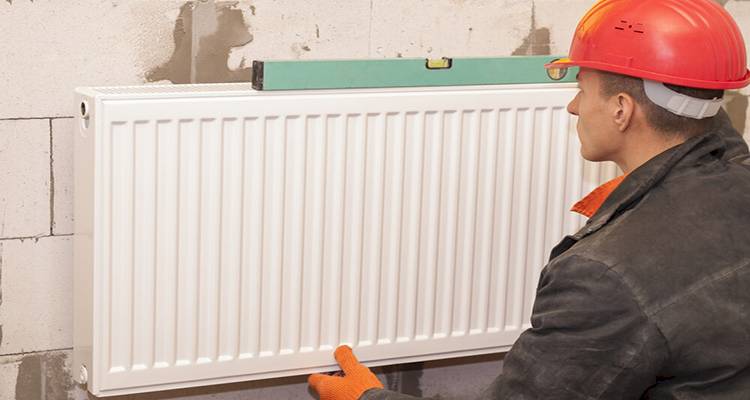
You should also check where your water pipes are located. The further away your radiator is from the existing pipework, the more it is going to cost as it will take a lot longer to reposition the radiator. Adding new pipework is a time-consuming task so you should be aware of this beforehand.
Building Regulations for Moving Radiators
In most cases, you do not need any form of building regulations approval in order to move a radiator.
You may need to seek building regulations approval if you complete any of the following as a part of the job:
- Install a new or replacement heating system or boiler
- Install an additional radiator to your existing heating system
If you are unsure of whether or not you are going to need building regulations approval for your job at hand, then it is always best to seek advice from a professional before going ahead with the work.
Cost of Moving a Radiator
If you are renovating your home or redecorating a room, you may want to move your radiator so that it fits in with the new layout of the room. You may also want to move a radiator in cases where it is not heating the room efficiently.
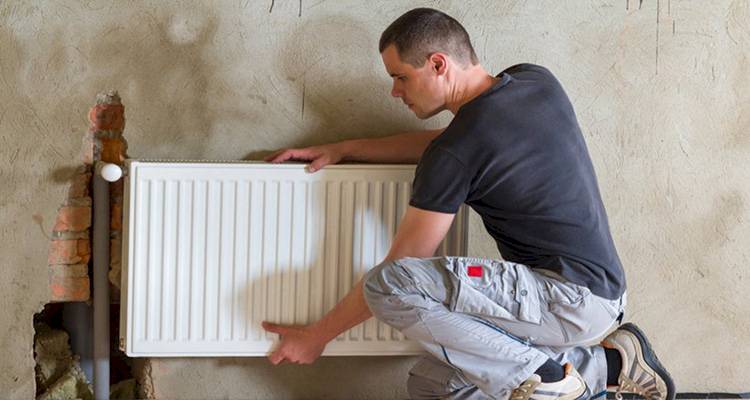
Although the work can be done as a DIY project for someone with basic plumbing knowledge, it’s always best to opt for a professional to move your radiator. If the job isn’t completed correctly, you could cause some damage to your heating system.
The total cost of the job will depend on what you are looking to achieve. You can expect to pay roughly £40-£60 for the materials and a further £80-£120 for the labour of moving the radiator.
Hiring Someone for Moving Radiator Checklist
When you are looking to hire a plumber to move your radiator for you, there are a few things that you need to consider first. Below is a list of things that you should think about when trying to find the right contractor for the job:
- Does the contractor have any testimonials for their previous work?
- How much experience does the contractor have of moving radiators?
- Do you know anyone that can recommend a good contractor to you?
- Does the contractor offer any guarantees on their work?
- Be sure to obtain at least 3 quotes from various contractors with costs to move a radiator
- Ask for a breakdown of costs on the quote so that you know you’re getting a good price for each different element of the job
FAQs
Does it matter which way you pipe a radiator?
What is the best type of radiator?
What are the two valves on a radiator for?
Where should I put my radiator?
Why is my radiator hot at the top and cold at the bottom?
Sources
https://heatingforce.co.uk/blog/radiator-installation-costs
https://www.real-fix.com/general/how-much-to-move-a-radiator
https://assets.publishing.service.gov.uk/government/uploads/system/uploads/attachment_data/file/433759/150604_Building_Work_Leaflet_amended_version.pdf


